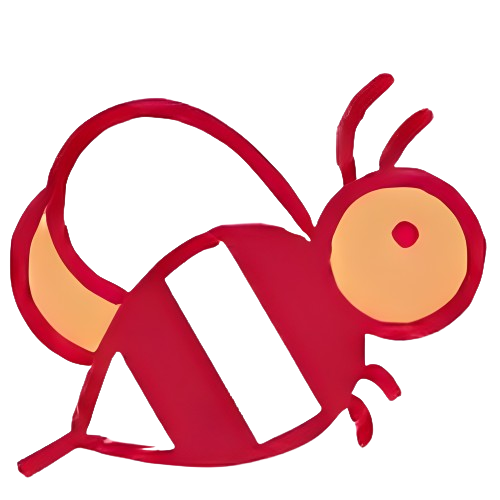


Renowned nuclear scientist and key figure in India's nuclear program, Dr. R Chidambaram, passed away at the age of 88. He was known for his contributions to nuclear research and played a significant role in India's nuclear tests and the country's civil nuclear agreement with the United States. His passing marks a significant loss for the scientific community and the country's progress in the field of nuclear technology.
Dr. Rajagopala Chidambaram: A Legacy of Nuclear Accomplishments
Dr. Rajagopala Chidambaram, a renowned nuclear scientist and a key figure in India's nuclear program, passed away recently at the age of 88. His passing leaves an unfillable void in the scientific community and the country's pursuit of nuclear technology.
Early Life and Education
Dr. Chidambaram was born in 1934 in a village in Tamil Nadu, India. He completed his education at the Indian Institute of Technology, Madras, where he earned a bachelor's degree in physics. He later went on to pursue a doctorate in nuclear science from the University of Birmingham in the United Kingdom.
Nuclear Career
Dr. Chidambaram joined the Bhabha Atomic Research Centre (BARC) in Mumbai in 1965. Throughout his illustrious career, he made significant contributions to various aspects of nuclear research, including:
Leadership Roles
In recognition of his expertise and contributions, Dr. Chidambaram held several leadership positions within the nuclear program, including:
Awards and Recognition
Dr. Chidambaram received numerous awards and accolades for his exceptional contributions to the field of nuclear science, including:
Legacy and Impact
Dr. Chidambaram's legacy will continue to inspire generations of nuclear scientists and researchers. His pioneering work has laid the foundation for India's nuclear program, contributing to the country's energy security and its status as a nuclear power. His dedication to excellence and his unwavering commitment to scientific advancement have left an indelible mark on the field of nuclear technology.
Top 5 FAQs and Answers
Q1: What was Dr. Chidambaram's most significant contribution to India's nuclear program? A1: Dr. Chidambaram played a key role in the development of India's first nuclear reactor, CIRUS, and in the country's nuclear tests in 1974 and 1998.
Q2: What was the significance of the civil nuclear agreement between India and the United States? A2: The civil nuclear agreement, signed in 2008, allowed India to purchase nuclear fuel and technology from the United States, ending decades of nuclear isolation.
Q3: What was Dr. Chidambaram's role in the Atomic Energy Commission? A3: As Chairman of the Atomic Energy Commission, Dr. Chidambaram oversaw the development and implementation of India's nuclear policy.
Q4: What awards did Dr. Chidambaram receive for his work? A4: Dr. Chidambaram received the Padma Shri, Padma Bhushan, and Padma Vibhushan for his contributions to nuclear science.
Q5: How will Dr. Chidambaram be remembered? A5: Dr. Chidambaram will be remembered as a visionary scientist and a dedicated leader who played a pivotal role in shaping India's nuclear program and advancing the field of nuclear technology globally.

A remote monitoring camera operated by the US Geological Survey captured stunning visuals of the recent volcanic eruption at Hawaii's Kilauea Volcano. The footage showed lava fountains up to 100 feet high and the raw power of nature as the lava eventually engulfed the camera. This eruption, known as Episode 38, was the latest in a series of eruptions that have been occurring since December last year. However, according to USGS, another episode could take place in the near future.

Indian Prime Minister Narendra Modi virtually inaugurated Skyroot Aerospace's new Infinity Campus in Hyderabad and unveiled their first orbital launch vehicle, the Vikram-I. During the event, PM Modi praised India's advancements in space technology and spoke about the importance of private companies like Skyroot in driving innovation in the space sector. The Infinity Campus, equipped with state-of-the-art facilities, has the capacity to produce one rocket per month, marking a significant milestone in India's private space manufacturing capability. Skyroot Aerospace, founded by former ISRO engineers, has quickly become a prominent player in India's growing space industry, with the successful launch of Vikram-S, the country's first privately built sub-orbital rocket.

We all experience changes in our mood, whether it's feeling happy and content or irritated and moody. But what are the underlying factors that contribute to these changes? This article from Medindia explores the top 10 things that can affect our mood, from physical health to environmental factors. It also provides tips on how to avoid these mood-altering triggers and maintain a positive state of mind. With a focus on promoting overall well-being, Medindia's policies align with the UN's Sustainable Development Goals, making it a reliable source of information for health and wellness.

A recent report by Public Health Scotland has shown a steep increase in flu cases and hospitalizations in Scotland. The numbers have more than doubled from the previous week, with a higher intensity observed in younger age groups. Experts are warning of a long flu season and a new variant of the illness that is spreading more easily. Health Secretary Neil Gray has assured the public that there are enough doses of flu vaccine available in the country.

The observation of National Pollution Control Day on 2 December serves as a timely reminder of India's struggle with escalating pollution levels. The recent years have seen a sharp increase in toxic particles and hazardous emissions, causing severe health issues and environmental damage. The ongoing pollution emergency calls for more stringent regulations, better urban planning, and increased public engagement to mitigate the crisis.

As World AIDS Day approaches, conversations around HIV prevention in India are becoming more open and informed. In particular, there is growing interest in PrEP (pre-exposure prophylaxis), a medicine that offers strong protection against HIV when used correctly. With rising awareness and more accessible sexual-health services, doctors are seeing a steady rise in patients asking about PrEP as a proactive health choice. This signals a shift towards informed prevention and a stigma-free dialogue surrounding HIV.

ISRO has been making continuous efforts to establish contact with the Vikram lander and Pragyan rover, which were put into sleep mode earlier this month, ahead of the lunar night. However, the prolonged spell of cold weather conditions, reaching up to -150 degrees Celsius, has made it difficult for them to wake up. With the sunrise on the Moon's south polar region and their solar panels believed to be optimally charged now, ISRO is hoping to revive the lander and rover and continue with their experiments and studies. The latest update from ISRO is that the plan to reactivate them has been delayed to September 23 due to the extreme lunar weather conditions.

Monsoon season may bring romantic vibes, but it's also a nightmare for contact lens wearers. Rainwater contains bacteria and pollutants that can cause eye infections, especially when wearing contact lenses. Ophthalmologists recommend using glasses instead and practicing good hygiene to avoid irritation and infection.

India's first human spaceflight mission, Gaganyaan, is one step closer to reality as ISRO successfully tested the main parachutes for the mission's Crew Module. The test, conducted at the Babina Field Firing Range in Uttar Pradesh, is part of the qualification process for the Gaganyaan parachute system. The system, which includes 10 parachutes of different types, is designed to ensure the safe and stable descent of astronauts returning to Earth. This milestone test marks a crucial step forward for India's ambitious space exploration goals.

As World Pneumonia Day is observed on November 12, experts are drawing attention to the dangerous link between air pollution and respiratory illnesses. In India, the post-Diwali smog adds to the already high levels of pollution, increasing the risk of pneumonia, particularly among vulnerable populations. While outdoor air pollution is often blamed, experts emphasize that poor indoor air quality also plays a significant role in triggering and worsening respiratory infections. Health professionals are urging for better air quality regulations and precautions to prevent this deadly connection between pollution and pneumonia.